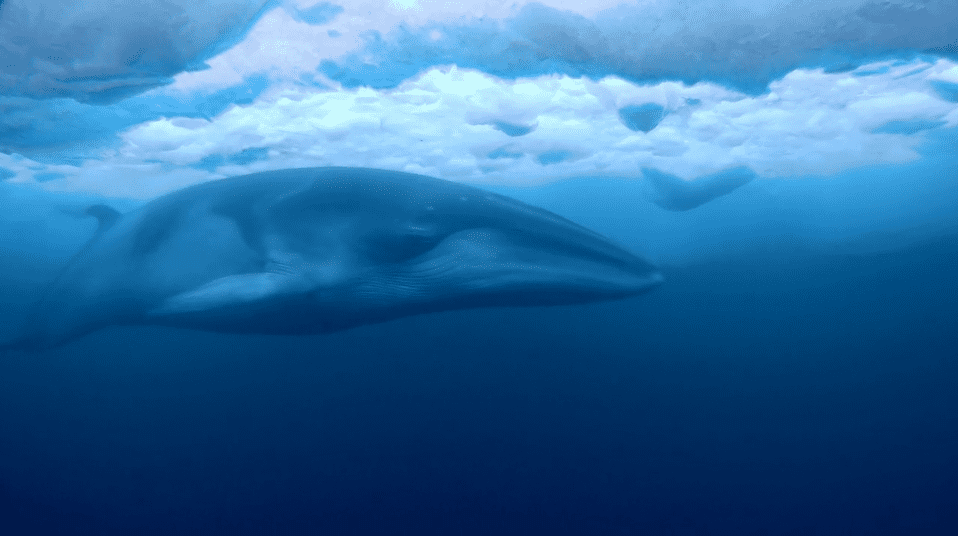Regina Eisert is a research scientist who focuses on marine mammals and their physiology. Despite working in the Antarctic quite a bit, she didn’t think minke whales are particularly interesting — until she caught them on camera. Now, she thinks they’re beautiful.
Above and below: although they’re understudied, they’re majestic beneath the waves as well as on the surface.
Antarctic minke whales (Balaenoptera bonaerensis) don’t really get that much attention. They weren’t recognized as a distinct species until the 1990s and the whaling industry largely ignored them due to their small size and low oil yield. Of course, this worked out to their advantage, as they were among the few whale species who were able to maintain a large population up to the 21st century. But to this day, minke whales are grossly understudied.
Eisert herself wasn’t focused on them — she was in the Antarctic mostly to study orcas in the Ross Sea (a deep bay of the Southern Ocean in Antarctica). Along with her colleagues, Eisert planned to capture underwater footage for about two weeks, but they only filmed for about 90 minutes before they ran into technical problems. However, within those 90 minutes, they captured some remarkable takes — not with orcas, as they had planned, but rather with minke whales.

A minke whale (Balaenoptera bonaerensis), screenshot from the video. Image credits: Anthony Powell / Vimeo.
The conventional belief is that the minke whales dedicate most of their time to hunting krill, but as the team reports, there was no krill around. Instead, Eisert believes they were chasing small schools of fish. Due to the inaccessible habitat of the minke whales, studies have been few and far between, and as a result, we don’t even know exactly what they eat. Eisert and her colleagues hope to solve that question. They used a modified tranquilizer gun to gather a tiny amount of skin and blubber from whales and analyze it in the lab.
The biologists also found that when the U.S. Coast Guard icebreaker Polar Star had earlier cut a channel through the ice between two research stations, it also benefitted the whales: the path the icebreaker tore through now also as a highway for whales and other marine creatures.
After gaining a new appreciation for minke whales (and especially the individuality they exhibited), Eisert wants to learn more about them, despite the difficulty of studying them in such a remote area. Now, she will get the chance to do so, as part of a larger study on the ecosystem in the Ross Sea.









